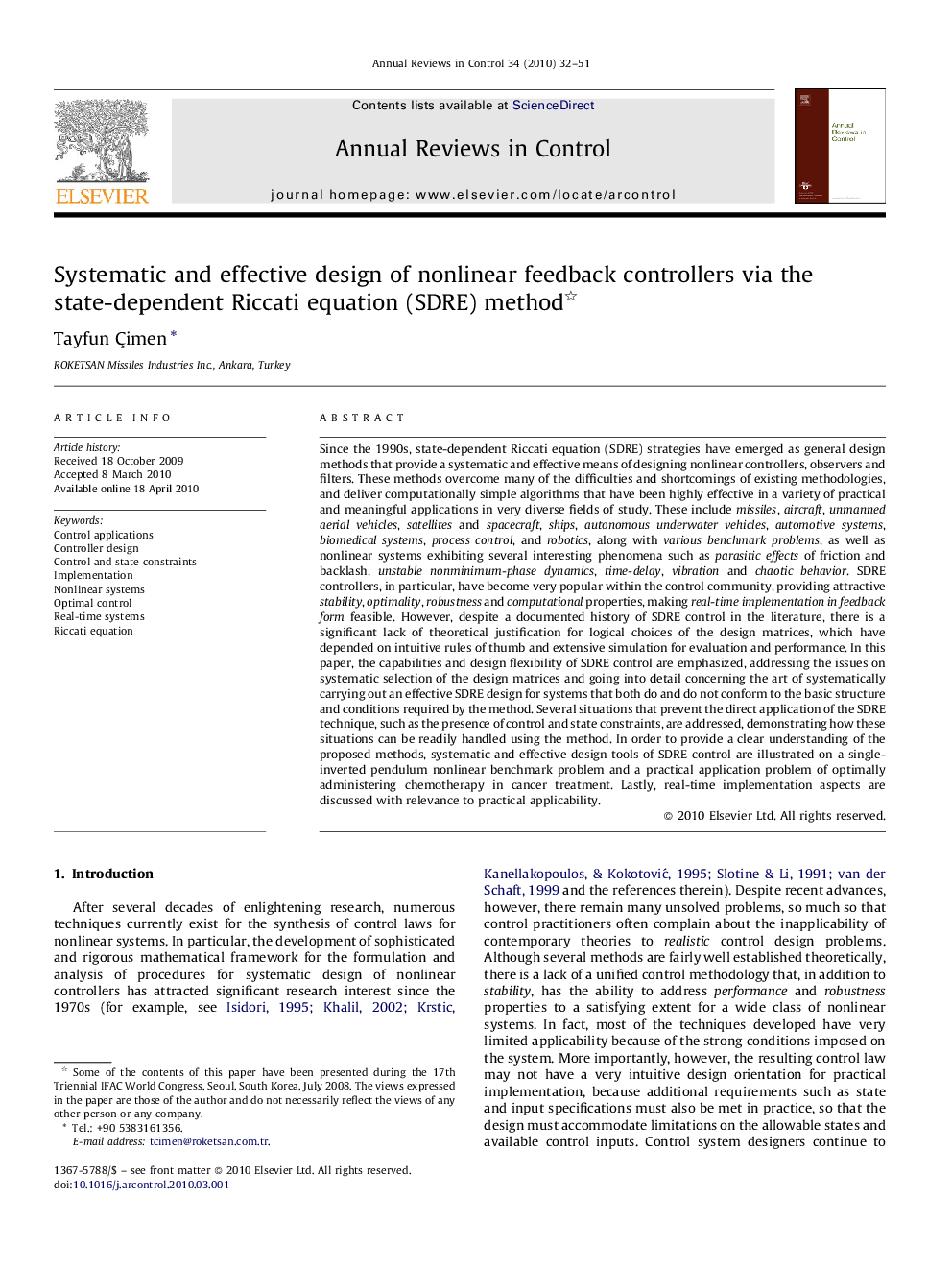| Article ID | Journal | Published Year | Pages | File Type |
|---|---|---|---|---|
| 694908 | Annual Reviews in Control | 2010 | 20 Pages |
Since the 1990s, state-dependent Riccati equation (SDRE) strategies have emerged as general design methods that provide a systematic and effective means of designing nonlinear controllers, observers and filters. These methods overcome many of the difficulties and shortcomings of existing methodologies, and deliver computationally simple algorithms that have been highly effective in a variety of practical and meaningful applications in very diverse fields of study. These include missiles, aircraft, unmanned aerial vehicles, satellites and spacecraft, ships, autonomous underwater vehicles, automotive systems, biomedical systems, process control, and robotics, along with various benchmark problems, as well as nonlinear systems exhibiting several interesting phenomena such as parasitic effects of friction and backlash, unstable nonminimum-phase dynamics, time-delay, vibration and chaotic behavior. SDRE controllers, in particular, have become very popular within the control community, providing attractive stability, optimality, robustness and computational properties, making real-time implementation in feedback form feasible. However, despite a documented history of SDRE control in the literature, there is a significant lack of theoretical justification for logical choices of the design matrices, which have depended on intuitive rules of thumb and extensive simulation for evaluation and performance. In this paper, the capabilities and design flexibility of SDRE control are emphasized, addressing the issues on systematic selection of the design matrices and going into detail concerning the art of systematically carrying out an effective SDRE design for systems that both do and do not conform to the basic structure and conditions required by the method. Several situations that prevent the direct application of the SDRE technique, such as the presence of control and state constraints, are addressed, demonstrating how these situations can be readily handled using the method. In order to provide a clear understanding of the proposed methods, systematic and effective design tools of SDRE control are illustrated on a single-inverted pendulum nonlinear benchmark problem and a practical application problem of optimally administering chemotherapy in cancer treatment. Lastly, real-time implementation aspects are discussed with relevance to practical applicability.
